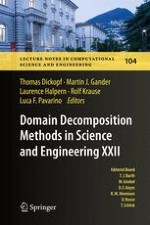These are the proceedings of the 22nd International Conference on Domain Decomposition Methods, which was held in Lugano, Switzerland. With 172 participants from over 24 countries, this conference continued a long-standing tradition of internationally oriented meetings on Domain Decomposition Methods. The book features a well-balanced mix of established and new topics, such as the manifold theory of Schwarz Methods, Isogeometric Analysis, Discontinuous Galerkin Methods, exploitation of modern HPC architectures and industrial applications. As the conference program reflects, the growing capabilities in terms of theory and available hardware allow increasingly complex non-linear and multi-physics simulations, confirming the tremendous potential and flexibility of the domain decomposition concept.
